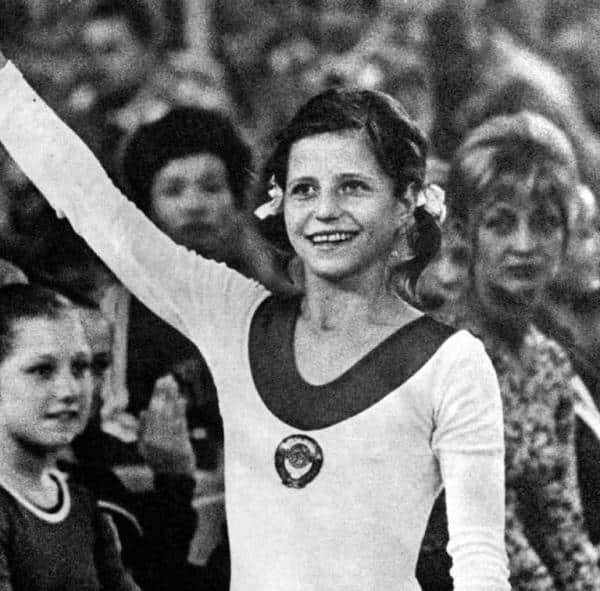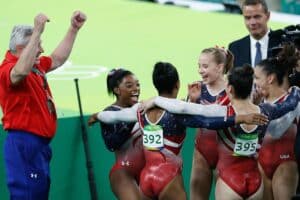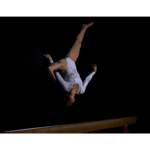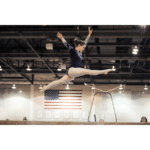
Explore the rich history of women’s gymnastics in this informative article. From pioneers like Olga Korbut and Nadia Comaneci to modern-day athletes like Simone Biles, discover the milestones and achievements that have shaped the sport into what it is today.
Table of Contents
- Key Takeaways
- Introduction
- The Beginnings of Women’s Gymnastics
- Pioneers of Women’s Gymnastics
- Evolution of Women’s Gymnastics
- Milestones in Women’s Gymnastics
- Achievements in Women’s Gymnastics
- Conclusion
- FAQs
Key Takeaways
- Women’s gymnastics has a rich history, dating back to the 1800s.
- Pioneers like Agnes Keleti and Larisa Latynina set the stage for future gymnasts.
- The sport has evolved from promoting fitness to showcasing remarkable athleticism.
Introduction
Women’s gymnastics has evolved tremendously since its inception in the 1800s. This sport was originally created to enhance physical fitness and flexibility, but over time, it has become a competitive sport that showcases incredible athleticism, strength, and grace. This article will explore the pioneers, milestones, and achievements of women’s gymnastics, highlighting the remarkable journey that this sport has taken.
The Beginnings of Women’s Gymnastics
Women’s gymnastics can be traced back to the early 1800s when it was first introduced in Sweden by Pehr Henrik Ling, a physical education teacher. This form of gymnastics was known as Swedish gymnastics, and it was designed to promote fitness and flexibility among women. The exercises consisted of basic movements such as running, jumping, and stretching.
Pioneers of Women’s Gymnastics
The early pioneers of women’s gymnastics were trailblazers who defied societal norms and paved the way for future generations of female gymnasts. Some of the most notable pioneers include:
- Agnes Keleti: Keleti was a Hungarian gymnast who won 10 Olympic medals, including five golds, at the 1952 Helsinki Olympics and the 1956 Melbourne Olympics.
- Vera Caslavska: Caslavska was a Czechoslovakian gymnast who won 7 Olympic gold medals and 4 silver medals in the 1960s, including winning the all-around title at the 1964 Tokyo Olympics.
- Larisa Latynina: Latynina was a Soviet gymnast who won 18 Olympic medals, including 9 golds, at the 1956 Melbourne Olympics, the 1960 Rome Olympics, and the 1964 Tokyo Olympics.
- Margit Korondi: Korondi was a Hungarian gymnast who won six Olympic medals, including four golds, at the 1936 Berlin Olympics and the 1948 London Olympics.
- Maria Gorokhovskaya: Gorokhovskaya was a Soviet gymnast who won two gold medals, five silver medals, and one bronze medal at the 1952 Helsinki Olympics.
- Jeanette Campbell: Campbell was an American gymnast who won four gold medals at the 1928 Amsterdam Olympics and a bronze medal at the 1932 Los Angeles Olympics.
- Alexandra “Sasha” Rabanovitch: Rabanovitch was a Romanian gymnast who won six Olympic medals, including two golds, at the 1936 Berlin Olympics and the 1948 London Olympics.
Olga Korbut
Olga Korbut was a famous gymnast from the Soviet Union who competed in the 1970s. She is often referred to as the “Sparrow from Minsk” and is best known for her innovative and acrobatic routines, which included backflips and other daring maneuvers that were previously unseen in women’s gymnastics.
Korbut competed in the 1972 Munich Olympics, where she won three gold medals and one silver medal. She also won a gold medal and a silver medal at the 1976 Montreal Olympics. Korbut’s success and unique style helped popularize gymnastics around the world and inspired many young girls to take up the sport.
Nadia Comăneci
Nadia Comăneci was a famous gymnast from Romania who competed in the 1970s and 1980s. She is widely considered to be one of the greatest gymnasts of all time and is particularly famous for being the first gymnast to score a perfect 10 at the Olympics.
Comăneci competed in the 1976 Montreal Olympics, where she won three gold medals, one silver medal, and one bronze medal. She also won two gold medals, two silver medals, and one bronze medal at the 1980 Moscow Olympics. Comăneci’s precise and graceful routines captivated audiences around the world and helped popularize gymnastics as a sport.
Comăneci’s legacy in gymnastics continues to this day, and she remains an inspiration to many young gymnasts around the world.
Evolution of Women’s Gymnastics
Over the years, women’s gymnastics has evolved significantly, with new skills and techniques being introduced that showcase the incredible strength, agility, and grace of female gymnasts. The evolution of women’s gymnastics can be divided into four distinct eras:
Era 1: Early 20th Century
Female gymnastics from the late 19th century up to the 1920s was quite different from modern-day gymnastics. Women’s gymnastics during this time was mainly focused on developing strength and agility, rather than the complex acrobatic skills that we see in modern gymnastics.
What women wore during gymnastics varied depending on the country and the specific gymnasium. In general, women wore long, modest dresses or skirts that covered their legs, and often wore blouses with high necklines. As gymnastics became more popular, gymnasiums began to adopt more practical clothing, such as bloomers or shorts and fitted tops.
Women typically practiced gymnastics in dedicated gymnasiums, which were often part of schools or other educational institutions. These gymnasiums were equipped with basic equipment such as balance beams, parallel bars (uneven bars hadn’t been thought of yet), and vaulting horses. They were often small and lacked many of the amenities and safety features found in modern gyms.

The routines that women performed during gymnastics were typically less complex than those performed today. Routines focused on basic skills such as jumping, basic tumbling, and balancing. Women’s gymnastics during this time was not yet recognized as an Olympic sport, but it was included in other international competitions, such as the World Gymnastics Championships.
Overall, women’s gymnastics during the late 19th century up to the 1920s was a more modest and less complex form of gymnastics than what we see today. However, it played an important role in the development of the sport and helped pave the way for the more advanced gymnastics that we see today.
Era 2: 1920s – 1940s
Women’s gymnastics was first included in the Olympic Games in 1928, at the IX Olympiad in Amsterdam. The inclusion of women’s gymnastics in the Olympics was the result of several factors, including the growing popularity of gymnastics as a sport and the efforts of several individuals and organizations.
One of the key figures in the effort to include women’s gymnastics in the Olympics was the Dutch gymnast, Baroness Wilhelmina “Willy” H. M. E. van der Meer. Van der Meer was a prominent advocate for women’s gymnastics and was instrumental in lobbying the International Olympic Committee (IOC) to include the sport in the Olympics.
Van der Meer’s efforts were supported by other organizations, including the International Gymnastics Federation (FIG), which had been founded in 1881 and was working to promote the sport of gymnastics worldwide. The FIG played an important role in standardizing gymnastics rules and regulations, which helped to make the sport more organized and accessible to athletes around the world.
Despite these efforts, there was some opposition to the inclusion of women’s gymnastics in the Olympics. Some critics argued that women were not physically capable of performing the same skills as men and that the inclusion of women’s gymnastics would detract from the purity of the Olympic Games. However, these arguments were ultimately not persuasive, and women’s gymnastics was included in the Olympics in 1928.
The inclusion of women’s gymnastics in the Olympics was a significant milestone for the sport and helped to increase its popularity and visibility worldwide.
The outbreak of the second world war in Europe in 1939 prevented any major competitions from taking place in the 1940s however, female gymnastics was popular in Nazi Germany, and the Nazi regime actively promoted the sport as part of its ideology of physical fitness and strength. The Nazi regime saw gymnastics as a way to promote the health and vitality of the German people, and as a way to cultivate discipline, obedience, and loyalty to the state.

The Nazi Party created several organizations dedicated to promoting physical fitness and gymnastics, including the Reichsbund für Leibesübungen (Reich Association for Physical Exercise), which oversaw all sports and physical education in Nazi Germany. The Reichsbund für Leibesübungen promoted gymnastics as a way to develop “Aryan” physical attributes such as strength, endurance, and agility, and as a way to prepare young people for military service.
Women’s gymnastics was also used as a tool for propaganda, and female gymnasts were often portrayed as models of physical perfection and patriotism. The Nazi regime encouraged women to participate in gymnastics as a way to promote health, discipline, and self-control, and as a way to contribute to the greater good of the state.
Despite the propaganda and promotion of gymnastics by the Nazi regime, there were some who resisted the regime’s efforts to control the sport. Some female gymnasts and gymnastics instructors were members of the resistance movement and used the sport as a way to express their opposition to the regime and to promote alternative visions of physical fitness and strength.
Era 3: 1950s – 1970s
During this era, women’s gymnastics became primarily focused on artistic gymnastics, which included four events: vault, uneven bars, balance beam, and floor exercise. This format is still in use in modern-day gymnastics.
The Cold War of the 1950s had a significant impact on female gymnastics, particularly in the competition between the Soviet Union and the United States. Gymnastics became a way for both countries to showcase their political ideologies and promote their countries’ respective systems.
Eastern European countries, particularly the Soviet Union and East Germany, produced many successful gymnasts in the 1950s, 60s, and 70s such as Olga Korbut (1972 onwards). There were several factors that contributed to this success, including government investment in sports programs, a focus on early talent identification and development, and a strong emphasis on the importance of physical fitness and national pride.

The Soviet Union and East Germany had centralized sports programs that were funded and controlled by the government, which meant that talented gymnasts were identified at a young age and given access to high-level coaching and training facilities. These gymnasts were often separated from their families and placed in specialized training centers, where they would spend hours each day practicing and perfecting their skills.
In addition to the investment in sports programs, Eastern European countries also placed a strong emphasis on the importance of physical fitness and national pride. Gymnastics was seen as a way to showcase the physical and mental strength of their athletes, and to demonstrate the superiority of their political and economic systems.
The success of Eastern European countries in female gymnastics during this period also had a lasting impact on the sport. Their training methods, including the use of specialized facilities, early talent identification, and focus on technical excellence, have been adopted by gymnastics programs around the world. However, it is also important to note that the success of Eastern European gymnasts was often accompanied by allegations of doping and other forms of abuse, which have since been investigated and condemned by international sports organizations.
Era 4: 1980s – 1990s
The next era of women’s gymnastics was marked by a shift toward power and athleticism. Gymnasts began incorporating more difficult skills into their routines, including tumbling passes and acrobatic elements. Equipment developments in the apparatus also helped gymnasts push the limits of what was possible. This era saw the rise of gymnasts such as Nadia Comăneci and Mary Lou Retton, who were known for their incredible power and strength.

Era 5: 2000s – present
The modern era of women’s gymnastics is characterized by a focus on difficulty and innovation. Gymnasts today are performing skills that were once considered impossible, such as the Yurchenko double pike vault and the triple-twisting Yurchenko vault.
These vaults became possible with the introduction of the table vault in the early 2000s which made it safer to attempt difficult skills. More on that in the detailed guide I wrote about the Vault.
Because female gymnastics is so stunning to watch and is visually impressive, modern-day gymnasts have benefited from the rise of social media, YouTube and the increased popularity of the sport.
The US college system is popular around the world and many elite gymnasts have found a level of fame that offers a comfortable lifestyle outside of the gym. But that level of success does not come easily as most female gymnasts will have started at a young age, putting in thousands of intense training hours to achieve professional success. It is still the case that female gymnasts usually retire by their early 20s. You can find out why in this article I wrote here.

Names like Simone Biles, Ally Raisman, Gabby Douglas and many more are recognized globally because of their achievements in modern-day women’s gymnastics.
Milestones in Women’s Gymnastics
Throughout the history of women’s gymnastics, there have been numerous milestones that have helped shape the sport into what it is today. Some of the most significant milestones include:
First Olympic Appearance
Women’s gymnastics first appeared in the Olympic Games in 1928 in Amsterdam, with only team events being contested. Individual events were added in 1952 at the Helsinki Olympics.
First Perfect 10
Nadia Comaneci, a Romanian gymnast, made history at the 1976 Montreal Olympics when she became the first gymnast to score a perfect 10.0. Because of changes to the scoring systems, a perfect 10.0 is no longer possible.
Achievements in Women’s Gymnastics
Women’s gymnastics has produced some of the most accomplished and decorated athletes in the world. Here are some of the greatest achievements in the history of women’s gymnastics:
Most Olympic Medals
Soviet gymnast Larisa Latynina holds the record for the most Olympic medals in women’s gymnastics with 18 total medals, including nine gold medals. She competed in the 1956, 1960, and 1964 Olympics.
Most World Championship Medals
Simone Biles, an American gymnast, currently holds the record for the most World Championship medals with 25 total medals, including 19 gold medals. She has won 5 consecutive all-around titles at the World Championships.
First Female Gymnast to Perform a Double-Double
Simone Biles also made history in 2019 by becoming the first female gymnast to successfully perform a double-twisting double somersault dismount off the balance beam during a competition.
Conclusion
The history of women’s gymnastics has come a long way since its humble beginnings in the 1800s. Pioneers such as Simone Biles, Nadia Comaneci, Olga Korbut, and Larisa Latynina have paved the way for future generations of female gymnasts. Milestones such as the first Olympic appearance and the first perfect 10 have helped to elevate the sport to new heights. Achievements such as Larisa Latynina’s 18 Olympic medals and Simone Biles’ record-breaking performances continue to inspire and awe audiences around the world.
FAQs
- Who was the first female gymnast to score a perfect 10.0?
- Nadia Comaneci was the first female gymnast to score a perfect 10.0 at the 1976 Montreal Olympics.
- What is the quadruple twist?
- The quadruple twist is a skill in women’s gymnastics that involves performing four twists in the air during a vault.
- Who holds the record for the most World Championship medals in women’s gymnastics?
- Simone Biles holds the record for the most World Championship medals in women’s gymnastics with 25 total medals.
- What is the most difficult skill in women’s gymnastics?
- The most difficult skill in women’s gymnastics is currently the Yurchenko double pike vault, which involves performing a double somersault with a half-twist while keeping a straight body position.
- What is the difference between artistic gymnastics and rhythmic gymnastics?
- Artistic gymnastics is focused on performing skills on four apparatuses: vault, uneven bars, balance beam, and floor exercise. Rhythmic gymnastics involves performing routines that incorporate dance and gymnastics skills with the use of hand-held apparatuses such as a hoop, ball, or ribbon.
- A Complete Guide to Gymnastics Rips
 Are you tired of dealing with painful gymnastics rips on your hands from training? Look no further – this article offers a comprehensive approach to… Read more: A Complete Guide to Gymnastics Rips
Are you tired of dealing with painful gymnastics rips on your hands from training? Look no further – this article offers a comprehensive approach to… Read more: A Complete Guide to Gymnastics Rips - How is Gymnastics Scored? (answered)
 In the world of gymnastics, every flip, spin, and leap is a blend of athleticism, precision, and artistry. But how is gymnastics scored accurately and… Read more: How is Gymnastics Scored? (answered)
In the world of gymnastics, every flip, spin, and leap is a blend of athleticism, precision, and artistry. But how is gymnastics scored accurately and… Read more: How is Gymnastics Scored? (answered) - Level 5 Gymnastics Skills (Guide)
 This guide delves deep into the Level 5 gymnastics skills, providing insights, breakdowns, and an expert perspective on each skill and its significance in a… Read more: Level 5 Gymnastics Skills (Guide)
This guide delves deep into the Level 5 gymnastics skills, providing insights, breakdowns, and an expert perspective on each skill and its significance in a… Read more: Level 5 Gymnastics Skills (Guide) - Level 4 Gymnastics Skills (Guide)
 In this comprehensive guide, we’ll delve into the details of the Level 4 gymnastics skills, breaking down each requirement for a clear understanding. Whether you’re… Read more: Level 4 Gymnastics Skills (Guide)
In this comprehensive guide, we’ll delve into the details of the Level 4 gymnastics skills, breaking down each requirement for a clear understanding. Whether you’re… Read more: Level 4 Gymnastics Skills (Guide) - Level 3 Gymnastics Skills
 Level 3 is defined as a development level by USAG meaning not all clubs or gymnasts will compete these skills at a competition. This article… Read more: Level 3 Gymnastics Skills
Level 3 is defined as a development level by USAG meaning not all clubs or gymnasts will compete these skills at a competition. This article… Read more: Level 3 Gymnastics Skills - Gymnastics Levels Guide (Women’s Artistic)
 This guide will explore the often confusing world of gymnastics levels, explaining the overview for Women’s Artistic gymnastics and the key skill requirements for each… Read more: Gymnastics Levels Guide (Women’s Artistic)
This guide will explore the often confusing world of gymnastics levels, explaining the overview for Women’s Artistic gymnastics and the key skill requirements for each… Read more: Gymnastics Levels Guide (Women’s Artistic)
